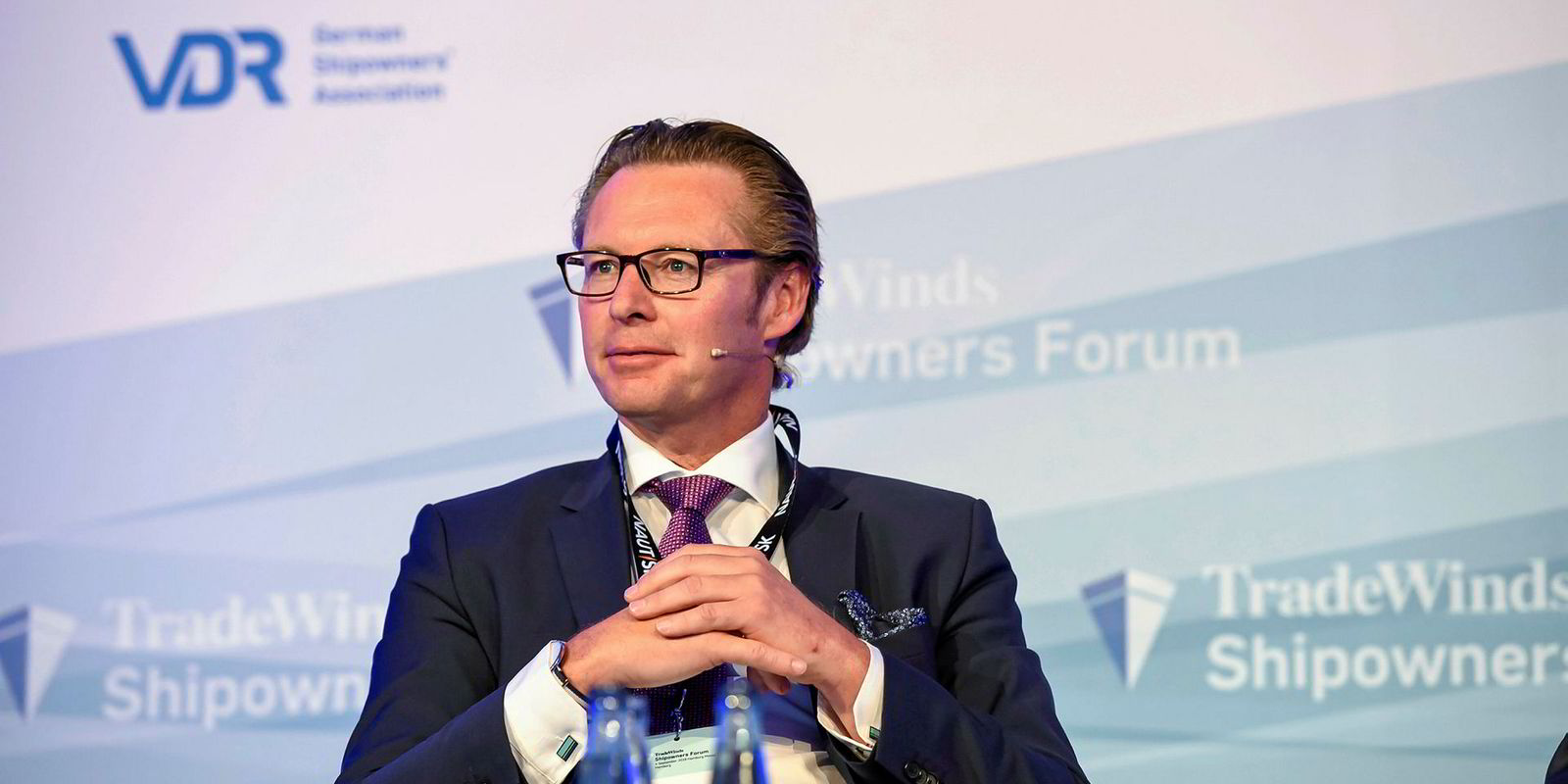The stated priority of DNV GL’s approach to the classification business has always to protect life, property and the environment.
So it is no surprise that safety is the first thing Knut Orbeck-Nilssen talks when meeting up with TradeWinds.
The chief executive of maritime at the Norwegian-owned classification society starts by emphasising that he believes shipping’s safety record continues to improve. But he does see some danger signs on the horizon that the industry could be starting to lose its focus.
One of Orbeck-Nilssen's biggest concerns is that safety could become an afterthought as shipping rushes to find a regulatory and technical solution for reducing emissions.
Two issues come to mind when he discusses the topic. First, there is the potential problem of untested blended low-sulphur fuels as a compliance option for the IMO 2020 regulations, which many fear could cause engine breakdowns.
Then there is the worry of reduced power on ships, which has been proposed to curb carbon emissions but could leave vessels without enough power to operate safely.
“What I have said on numerous occasions is that shipping is changing at a rapid pace,” Orbeck-Nilssen says. “There are three tectonic shifts — in the market, regulation and technology — that are all influencing safety.
'Don't take safety for granted'
“Safety has been improving year on year but we have to be mindful we don’t take it for granted. So when regulators are trying to meet stakeholders’ expectations on the environment, safety should always be at the core.”
He suggests there are a number of measures shipping can take to safeguard against losing its focus on safety.
For a start, regulators should take a holistic approach that always strikes a balance with maintaining safety.
He believes continuously developing a safety culture at sea, through work with crews, is another must for the industry.
Transparency will also help with safety.
Combining data platforms that provide open access to safety information and increased access to vessel-casualty reports will encourage a better understanding of the topic, while barriers should be broken down to help shipping learn from other industries such as aviation.

Orbeck-Nilssen says the Marshall Islands' report into the sinking of the 266,141-dwt VLOC Stellar Daisy (built 1993) says a lot about what is right, and wrong, with shipping’s safety culture. He praises the findings of the report but is disappointed that the industry had to wait two years to learn from its conclusions.
DNV GL’s inspection of converted VLOCs such as the Stellar Daisy under its class showed what the possible problems were with this ship type a year before the report came out. He believes similar findings could have been released much earlier by the Marshall Islands.
'Interim findings important'
“It shows the importance of publishing interim findings,” he says. “It’s a shame it took more than two years until the report came out. I don’t blame the Marshall Islands, there were other authorities involved too. But two years to share the key findings is a waste of insight and knowledge. There is a huge potential to be more agile and transparent [in accident investigation].”
He believes the International Association of Classification Societies, an organisation of 12 leading classification societies, which Orbeck-Nilssen chaired two year ago, could also make a major contribution to shipping’s safety culture.
He was outspoken in trying to make the association more relevant and responsive to the huge ongoing safety, technological and regulatory changes in the industry during his tenure.
But he is concerned that the momentum of initiatives he started at the time have now been lost, and that the association is in danger of becoming “less relevant”.
“During my chairmanship, DNV GL tried to modernise IACS and a lot of things we initiated got off to a good start," he says. "But I am disappointed to see limited traction in the development of IACS since then. There are already signs that unless it changes its approach, IACS will become less relevant and less useful.”
During my chairmanship, DNV GL tried to modernise IACS and a lot of things we initiated got off to a good start. But I am disappointed to see limited traction in the development of IACS since then
Knut Orbeck-Nilssen
He believes that changing the IACS decision-making process would go a long way towards ensuring the association becomes more proactive.
'Too much say'
For a start, he feels a one-member, one-vote system gives small classification members the same say as the industry giants — and more technically capable class societies — such as DNV GL, Lloyd’s Register, ClassNK and ABS. It can also slow down or block safety and other initiatives. The chairmanship only lasts a year, hardly enough time for initiatives to be seen through.
“At a time when the membership of IACS could grow by 10 classification societies in the next 10 or 20 years, small members have too much say in IACS,” he says.
“There are a number of structural issues that need to be addressed. Council meetings held twice a year is too infrequent. And the voting arrangements of one member, one vote, and a one-year term for the chairmanship, does not make sense.”
He believes some form of executive board, to make decisions in which the smaller classification societies are represented, would be a better way forward. He adds that a better technically resourced secretariat in London, which could move key proposals forward, is also important.





